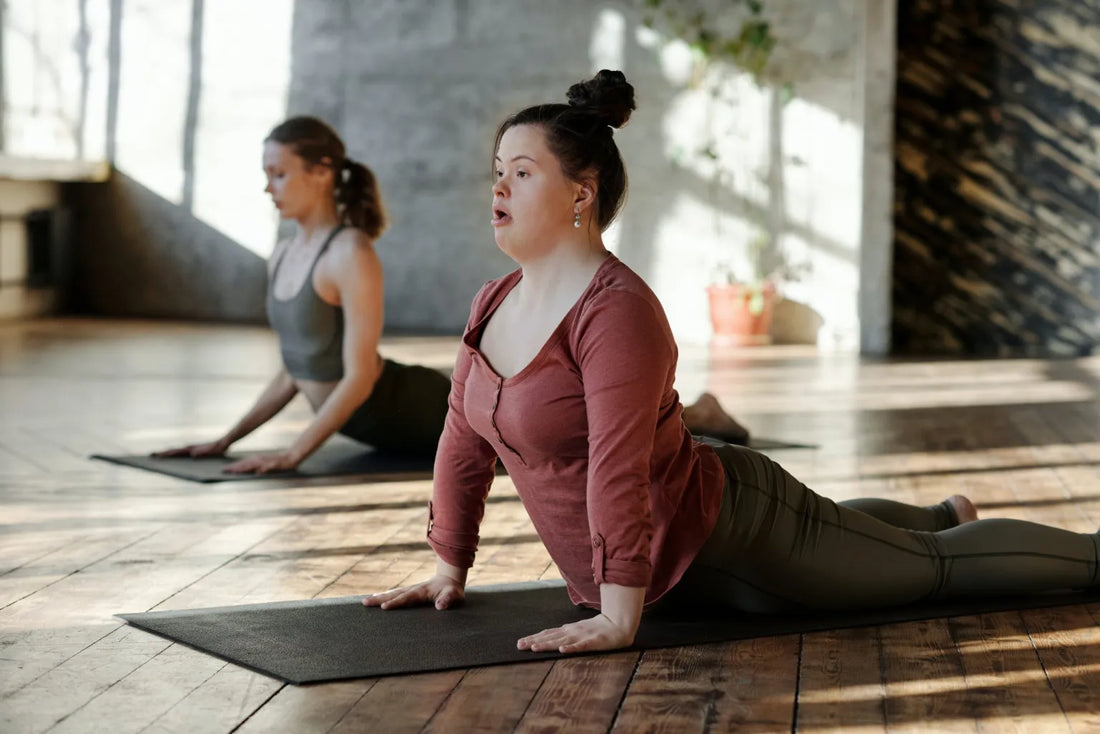According to numerous studies, Yoga is beneficial in helping children who require Special Education Needs (SEN). SEN includes children who are diagnosed with ADHD, Downs Syndrome, Cerebral Palsy, SPD or Autism. However, this list does not mean they are the only children who can benefit from the regular practice of yoga, but rather ALL children can benefit.
In Yoga, one consciously syncs the body, breath and mind together, recognizing their union in every human being. The system and various techniques practiced during Yoga cultivate the experience of that unity, leading to greater experience in the body. Additionally, it creates a deep sense of calm and clarity over the mind. It is a series of movements designed to build health and increase positive endorphins.
A growing body of research has found yoga to be an effective complementary therapy to reduce many of the factors related to physiological diseases and psychological disorders (Field, 2011). However, more recently studies looking at the effects of yoga on children with SEN has been promising. Children with SEN find difficulty in daily living activities and adapting to the changing environment (Kubilay et al., 2011). For children with mental retardation, fitness and overall functioning is lower as they are not active during the course of a school day compared with ‘normal children’. Therefore, these children tend to be weaker and more susceptible to early fatigue than their peers (Fernhall and Unnithan, 2002).
Multiple research studies have demonstrated how physical activity improves one’s fitness, mental health, memory and more. For example, reaction time of children with SEN significantly improves after just twelve weeks of exercise program (Yildirim et al., 2010). Yoga requires minimal training, resources or expense and can be an appropriate activity for individuals with intellectual disabilities. At a basic level, yoga promotes physical fitness by:
- Improving muscle strength
- Improving flexibility
- Improving stability
- Improving intelligent quotient (IQ)
- Improving social adaptation parameters
- Improving motor skills
- Reaction time
- Eye hand coordination
- Static balance
- Agility
- Improving relaxation & mental overall wellbeing
So not only has yoga been found to improve a child’s physical fitness, it has also been shown to reduce stress and tension, dissipate excess energy, relieve tiredness, lengthen attention span, improve physical health, sharpen concentration, enhance mental clarity, and cultivate better interpersonal relationships (Peck et al., 2005).
Yoga helps the body to be healthy and provides mental peace. This is extremely beneficial for disabled children, as they can get relief from physical ailments (Ijbarathi, 2012).
References
Fernhall B, P. K. (2001). Limitations to physical work capacity in individuals with mental retardation. Clin Exerc Physiol, 3, 176–185.
Field, T. (2011). Yoga clinical research review. Complementary Therapy Clinical, 17(1), 1-8.
Ijbarathi, I. (2012). Yoga: a ray of hope. Mumbai (India): Complete Wellbeing Publishing Private Ltd.
Kubilay NS, Y. Y. (2011). Effect of balance training and posture exercises on functional level in mental retardation. Fizyoter Rehabil, 22, 55-64.
Peck, H., Kehle, T., Bray, M., & Theodore, L. (2005). Yoga as an intervention for children with attention problems. Sch Psychol Rev, 34, 415–424.
Yildirim, N., Erbahçeci, F., Ergun, N., Pitetti, K., & MW., B. (2010). The effect of physical fitness training on reaction time in youth with intellectual disabilities. Percept Mot Skills, 111, 178-186.


